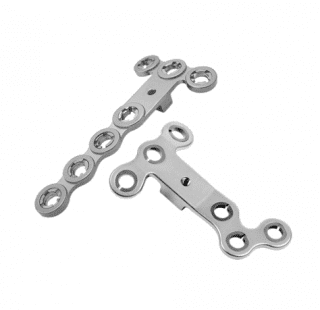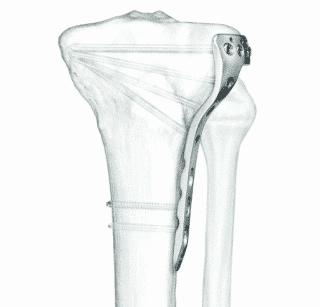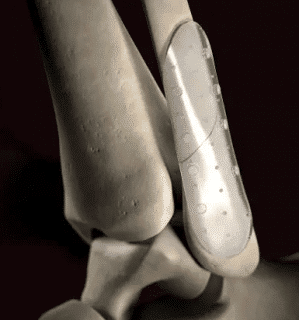A bone plate is an implant that is screwed onto a bone, a joint or several bone segments. It can be used to reduce a bone fracture or correct an orthopedic deformity.

A bone plate is an implant that is screwed onto a bone, a joint or several bone segments. It can be used to reduce a bone fracture or correct an orthopedic deformity.
There are three main types of bone plate: compression plates, arthrodesis plates and osteotomy plates.
For each application, a bone plate should enable:

Arthrex osteotomy plates
There are several criteria to consider when choosing a bone plate such as the application, whether the plate is locking or not, the geometry of the holes and the materials it is made of.

Depuy Synthes tibia compression plate
There are locking bone plates that are threaded at the screw holes, and non-locking plates. Both have their own advantages.
Advantages of locking compression plates:
The main advantage of non-locking compression plates is the greater angulation possible when screwing them in.
There are two main hole geometries for bone plates: symmetrical and asymmetrical. Here are their respective characteristics:

Stryker bone plate for mandibular reconstruction
The main materials used for bone plates are metal and bioresorbable polymers.
Below you will find a list of the advantages and disadvantages of metal and resorbable bone plates.
Advantages:
Disadvantages:
Resorbable compression plates:
Advantages:
Disadvantages:

Inion resorbable compression plate



This article is quite helpful to me as it opens my eyes to different types of bone plates, their advantages and disadvantages and other important information about bone plates